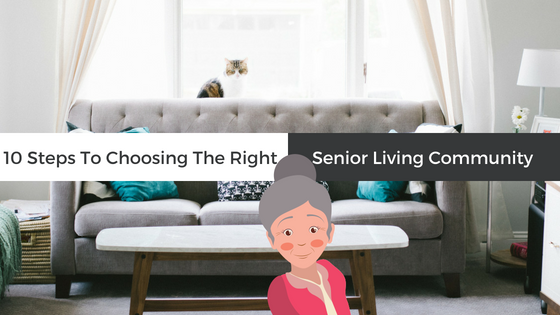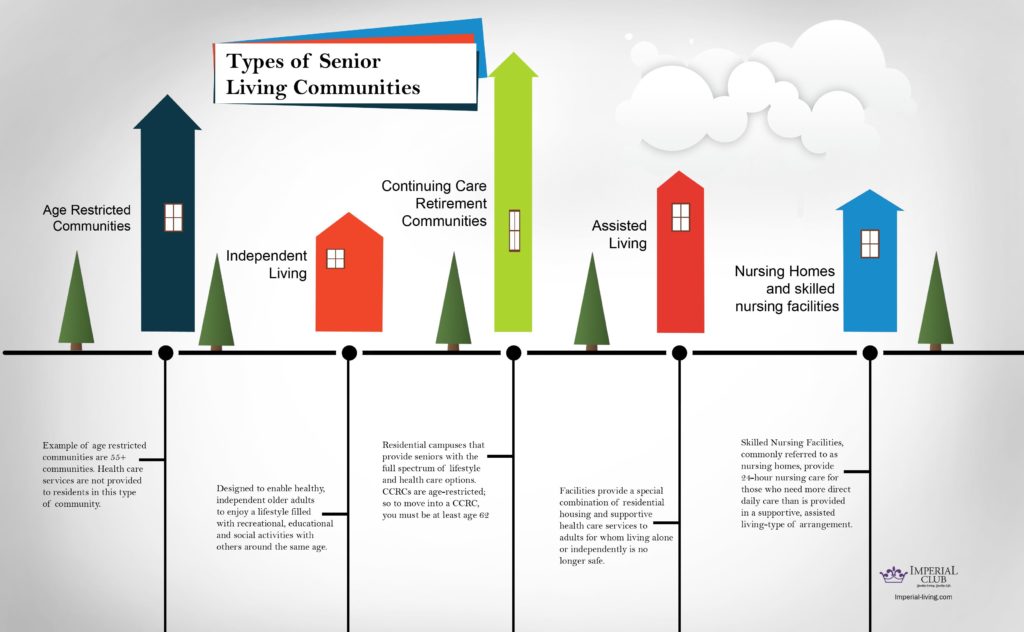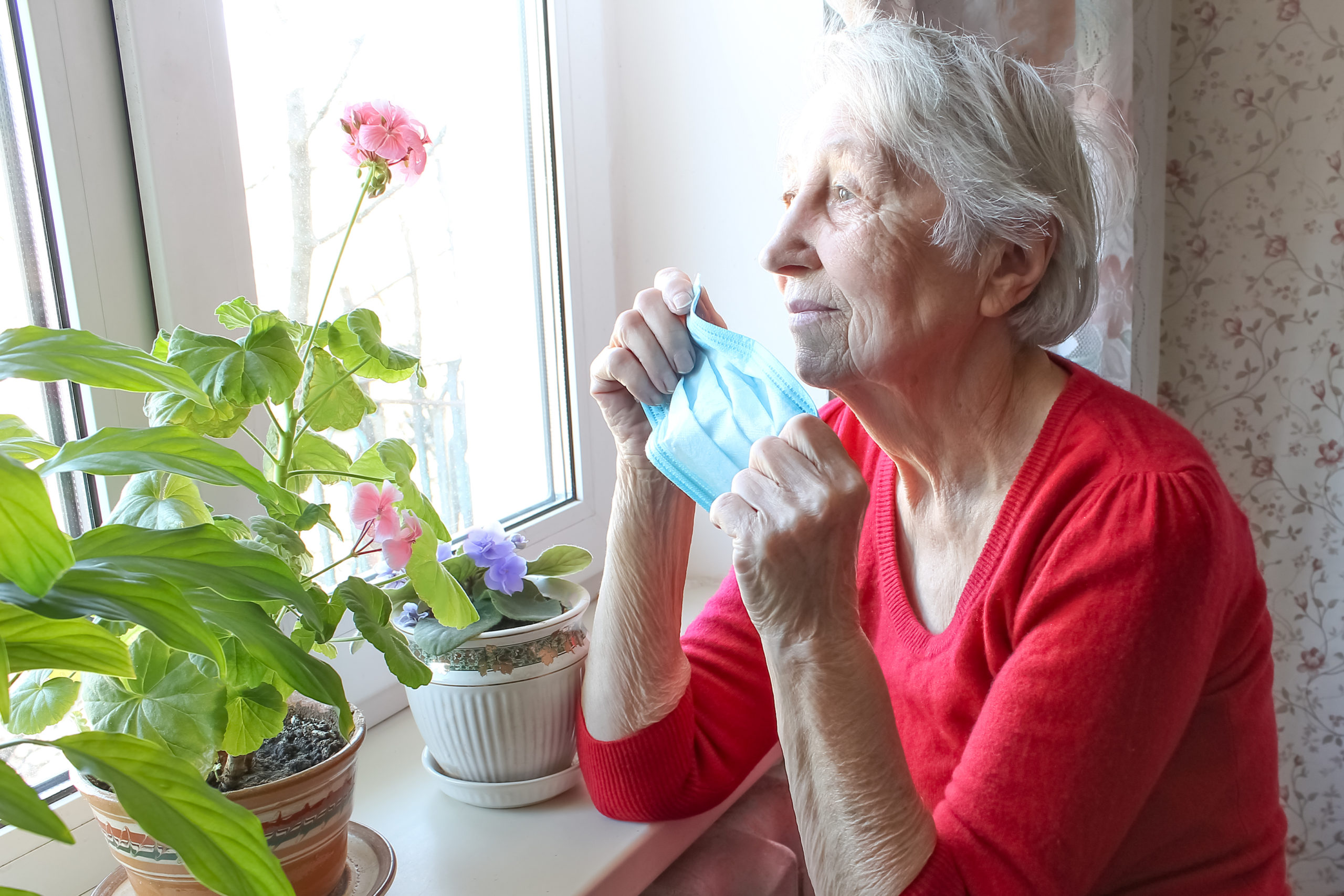10 Steps To Choosing The Right Senior Living Community

Transitioning into an assisted living, memory care, or independent senior living community is like any other move to a new home. It is a major life event, which can be overwhelming. Creating a plan will help you get organized and ensure you don’t miss any important details. Here are ten things to consider when looking for the right community for your loved one.
1. Understand Community Types
- Continuing care retirement communities (CCRCs) are ‘small towns’ which provide a continuum of housing, transitioning the resident as needed from catered/ independent living to assisted living to a nursing home for medical sub-acute or rehabilitative care. It usually is a long-term relationship of care. Most have a one-time entrance fee in addition to monthly fees, but some are on a rental basis.
- In assisted living communities, residents live in small apartments and are mobile, but need assistance with personal care, meals, and often medication. Assisted living does not provide the skilled daily medical care of a nursing home. The community can coordinate medical assistance with outside providers, but overall medical care is the family’s responsibility.
- There are also unique community models such as the Green House homes that combine residential care and a social community in a setting that is more homelike and personalized.

All types of communities are organized either as a nonprofit (faith-based or association owned) or for-profit (over 80 percent of assisted living communities).
2. Find The Right Fit
Will your parent be comfortable there long term? The apartment size, floor plan, location, dining/dietary options, décor, and amenities are all factors, but there are others. According to the National Center for Assisted Living (NCAL), assisted living residents are older than ever—over half of the residents are 85+ and 70 percent are women. This may or may not be a good fit for a younger person or a man. Ask for the activity list—see if there are stimulating activities that encourage purpose, meaning, and connections to new friends, as well as programs that provide social support. A community in a familiar area with good transportation can help in staying connected to their present social network. Two key quality of life indicators in a community are physical fitness programs and resident’s councils, according to ChangingAging.org. Some communities are pet-friendly, though there may be restrictions on type and size. (Guide dogs for the visually impaired must be permitted by law.)
3. Budget For The Future
Most assisted living communities can ‘mainstream’ residents with mild cognitive impairment or early-stage Alzheimer’s with some additional care support. When the condition progresses, that person can be transitioned through an internal move to a specialized memory care area, which minimizes disruption at a difficult time but is a higher and more costly care level. If your parent has Parkinson’s or another chronic, degenerative disease, investigate how much care can be provided in the setting, what that additional care will cost, and if there are other residents with similar conditions. Check to see if the apartments and common areas are disability and wheelchair-accessible, as some pre-1991 buildings are not. Two final checks: the quality of the nearest hospital and the community’s disaster preparedness, from blackouts to evacuations.
4. Make The Most Of Your Visits
Pick several ‘candidates’, whether from your own search or from referrals by friends, the local Area Agency on Aging (AAA), or a local geriatric care manager. Then go on at least one screening visit, preferably two—day and night. Meet with a staff person (the higher level the better) and take at least one tour that includes a meal or two. Ask questions, write down the answers, and take pictures if helpful. A ‘snap’ night visit can give you an idea of night staffing (ask about it) and their attentiveness to the residents.
Andrea Swayne, COO of Guardian Angels Senior Services in Elk River, MN, advises that on your visit and tour, “Use all your senses. See, touch, and smell. See the condition of the physical plant, maintenance, common areas, and apartments, that they are well maintained. Check the appearance of the residents and interactions with the staff. Smell for bad odors, which indicate the quality of housekeeping and resident care. Touch surfaces for cleanliness. And use your intuition. If it snowed two days ago and the lot, walkways, and driveways are not cleared, that is not a good sign.” Another recommendation from her: during the visit, use a public bathroom and run the same check.
Speak with residents, especially the head of the residents’ council, and privately ask a few questions on issues such as care, staffing, activities, and incidents such as onsite theft.
5. Compare Agreements
The agreements should detail what is included, what is not, and the staff-to-resident ratio. Find out how they care for residents as they age or become sicker. Determine if there are penalties or costs for leaving the community early, what those conditions are, refunds, and time frames. Find out when rate increases occur; two to five percent in January or July is standard. In a competitive market, you may be able to negotiate favorable timing or lower rate increases, which is important if your parent is on a fixed income. Some communities also have an ‘exclusionary clause’ where the community states they can no longer stay for reasons such as behavior or financial instability. Not all communities accept Medicaid or have fewer beds allocated to Medicaid with a waiting list. You should be aware of this situation upfront.
6. Learn What Is Included
There are two main areas of cost typically under two separate agreements: the rental housing cost and the care or service package. The Federal Fair Housing Act applies to senior residences. Know what is included, such as medication management, and what the “hidden fees” are, such as extra housekeeping and laundry. Ensure that the care package you agree to matches your parent’s condition at present. See if the community supplements direct care with proactive technology—at the very minimum, personal emergency alerts—such as wellness tracking or a supervised telemedicine connection to local doctors, which can detect subtle declines in condition and more quickly diagnose a potential illness. Ask questions, negotiate, and flag when the answers are less than forthcoming.
7. Check Credentials
This is important since a bankruptcy or sale may affect agreements and pre-payments. Do an internet search and consult your local AAA; for nonprofits, a search using Guidestar may be helpful. Swayne recommends asking the following questions: if there is a pending facility change of ownership in the next 6-12 months, the average resident length of stay by months, if there is a waiting list, staff turnover rates, and the average length of staff employment. Check their state licensure(s) as there are different levels by state: what care is covered; any citations, fines, and violations; plus their performance on their last state home care survey.
8. Arrange Payments
An adult child may sign agreements on behalf of their parents, but that could mean becoming the guarantor of payments if the parent does not pay or runs out of money. Bradley J. Frigon, an elder law attorney and past president of the National Academy of Elder Law Attorneys (NAELA), recommends that you sign the older adult’s name as the responsible party on the contract and add “by [name of agent] acting as power of attorney” with the date.
9. Get A Medical Assessment
This confirms with the community that you have the right level of care assigned and avoids after move-in revisions. Swayne advises that a qualified nurse at the assisted living community should do this so that the medical and cognitive assessment becomes part of the record before the move-in. This will be in addition to your private medical records and assessments. In addition, confirm the community’s procedures in the event of a medical emergency, which hospitals are used for admission, and disaster preparedness. This is also time to talk about your advanced directives and care priorities.
10. Ongoing Checks
Once your loved one settles in, it is never ‘set and forget’. You, friends and relatives should visit frequently. See and sense that your parent is engaged. Consult quarterly with senior staff and administrators. Their accessibility is a key indicator of quality, as is yours. Always review bills and your parent’s finances into the future. Question if there is a sudden increase in care required and crosscheck this need with your parent’s doctor(s). Check their care service for performance and medical records, especially concerning pharmaceutical prescriptions. Speak to aides, and always use your senses—including common sense.

Related Blogs






